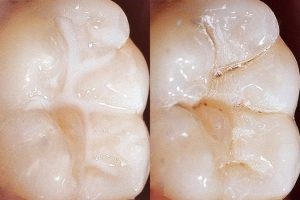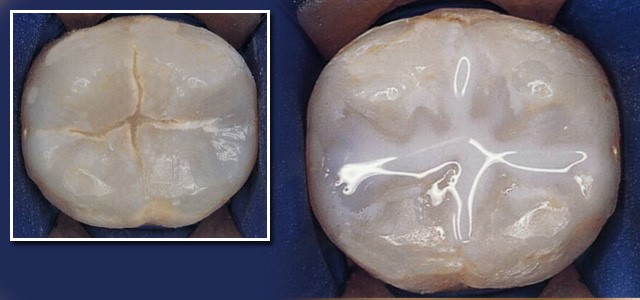-
Call Us Today
+91 868 649 1122
-
location
Telangana
SEALANTS
A dental sealant is a preventive treatment that is placed over the grooves of a tooth to prevent dental cavities. Sealants help ensure the biting surface of teeth. Sealants are commonly put on molars, however once in a while can be set on difficult to reach crevices on other teeth.
WHEN DOES ONE NEED DENTAL SEALANTS?
Children who advantage most from dental sealants include those
With extremely profound furrows in their molars
At a high risk for cavities
One who eat an eating routine high in handled foods, refined flours and sugars, and sweet beverages.
With unique needs that make dental cleanliness or potentially a sound eating routine all the more testing
Preferably, sealants ought to be put following the emission of the principal molars (around age 6) and second molars (around age 12).
The biting surfaces of the molar and premolar teeth have grooves — "gaps" — that make them powerless against decay. These fissures can be deep, are hard to clean, and can be smaller than even a solitary fibre of a toothbrush. Plaque accumulates in these areas, and the acid from microscopic organisms in the plaque attacks the finish and cavities can develop. Fluoride prevents decay and secures all the surfaces of the teeth, dental sealants give additional insurance to the grooved and pitted areas by giving a smooth surface covering over the fissured area. The main dental sealant to be placed is for the most part on the gap of the primary changeless molar tooth when the chewing surface of the tooth has erupted totally beyond the gum. This tooth develops in behind the baby teeth. If the biting (occlusal) surfaces of these teeth are fixed, the dental sealant will help secure the tooth. Except for the wisdom teeth, which come through a lot later, the molars and premolars keep on emitting until eleven-thirteen years old and the biting surfaces of these teeth can be fixed after they have ejected beyond the gum.

WHAT IS THE PROCEDURE OF DENTAL SEALANTS?
Applying sealant is a straightforward and easy process. It takes just a couple of moments for your dental specialist or hygienist to apply the sealant to seal every tooth. The application steps are as per the following:
1. The teeth that are to be fixed are completely cleaned.
2. Each tooth is then dried and cotton or another permeable material is put around the tooth to keep it dry.
3. A corrosive arrangement is put on the biting surfaces of the teeth to roughen them up, which causes the sealant to attach to the teeth.
4. The teeth are then flushed and dried.
5. A sealant is then painted onto the tooth polish, where it bonds straightforwardly to the tooth and solidifies. An extraordinary exceptional white light - "relieving" light - is utilized to enable the sealant to solidify.

POST TREATMENT CARE OF DENTAL SEALANTS
Dental sealants are easy but difficult to think about and can be brushed and flossed as ordinary. Utilize a toothbrush with delicate fibers and toothpaste utilizing a remineralizing agent like hydroxyapatite.
They may recolor with diets high in berries, espresso, teas, and red wine. Sealants may rarely "Pop" off if you are eating clingy, sticky, chewy foods.
FREQUENTLY ASKED QUESTIONS:
Are sealants truly necessary?
Dental sealant is not a vital depression preventing treatment for all kids, dental specialist’s state. It shouldn't be applied to all back teeth. Also, it can't be applied on a smooth surface, so sealant won't keep depressions from shaping between teeth, regardless of whether the outside of the teeth has been fixed.
Which teeth get sealants?
Dental sealant is a thin, plastic covering painted on the biting surfaces of teeth - as a rule, the back teeth (the premolars and molars) - to prevent tooth rot. The sealant rapidly bonds into the melancholy and scores of the teeth, shaping a defensive shield over the veneer of every tooth.
Are sealants and fillings the same?
Sealants are commonly given to kids to shield their back teeth from creating rot, white fillings can be given all through one's lifetime to re-establish a tooth from the rot that has just shaped. During a filling, in contrast to a sealant, the normal tooth structure is adjusted because of the expulsion of the rot
Can you still get cavities with sealants?
They're not a viable replacement for brushing and flossing, however they can shield holes from shaping and may even prevent beginning phases of rot from turning into an out and out depression. Truth be told, sealants have been appeared to decrease the danger of tooth decay by about 80% in molars.
